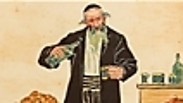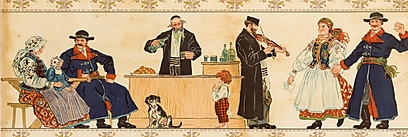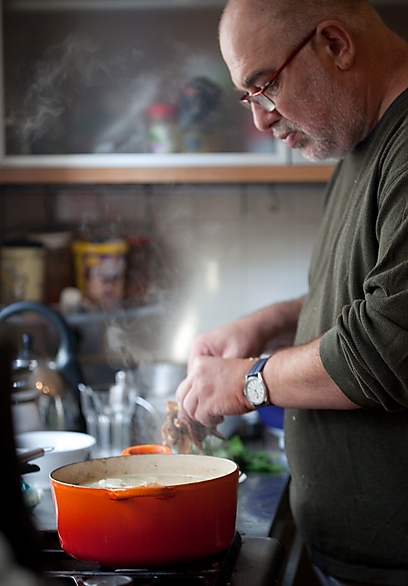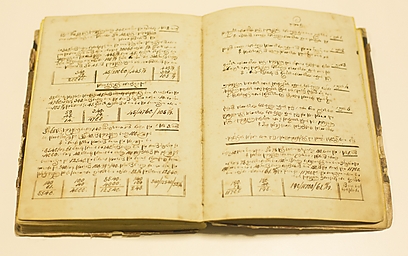
Illustration of 'Yankel the Bartender'
באדיבות הספרייה הלאומית
The secret history of Jewish moonshine in eastern Europe
Bootleg liquor and Judaism seem at odds, but before the Holocaust, over 80% of Poland's Jew were involved in the production of alcoholic and some even owned bars; all that remains of their legacy is a book of liquor recipes which recently landed in Israel – Ynet took it out for a spin.
A manuscript written in German in Hebrew letters is all that remains of the unknown story of Jewish liquor producer in Europe during the 19th century. The book contains recipes of liquors distilled by Jews from France, Wrocław and Gdańsk, and has recently arrived at Israel's National Library.
It's author, 'Yankel the Bartender', laid out clear instructions on how to produce these foreign yet distinctly Jewish drinks, including details about how they should smell and look.
Ynet invited chef Shmiel Holland, an expert in Eastern European cuisine, to take the book out for a spin. The chef, which will give a lecture on the topic at the National Library this Monday, even succeeded in brewing up a few of the 200-year-old drinks.
"The food you ate in your childhood, what we in Israel call 'Eastern European food', is immigrants food which was removed from its original settings," Holland explains.
For over hundreds of years many Eastern European Jews distilled alcohol, and worked in distilleries and bars. From the mid 18th century over 80% of rural Jews in Poland were involved in either the production or sale of alcohol, with many renting bars from local landowners.
"The local gentry knew that the Jews, unlike the rural gentiles, wouldn’t drink all of the merchandise – and would be able to turn such places into profitable establishments. So they let them run the local bars," he explains.
Holland explained that the Jewish alcohol production fell into three distinct categories.
The first was called Ya'sh (an acronym for burnt wine') which included distilling alcohol from widely available materials, like potatoes, barley, prunes and local berries. This was the booze sold to local gentiles , but Jews would also take a swig or two on Saturdays, holidays and special occasions like weddings Haredi 'tish' events or Hassidic conferences.
The second group included wine made from raisins and was intended almost exclusively for Jews. Jewish religious law demands Kiddush involve wine made from grapes, which is one of the seven species which grew in the biblical Holy land. But no such materials could be found the cold of east Europe where little to no grapes grow, and therefore Jews began to make wine from raisins, through a process of formation.
The third group was preserving fruits in alcohol. Because the spring and summer brought with them a wide and plentiful variety of fruits, and because refrigerators had not yet been invented, fruits were preserved in two ways: Jam or liqueur. The word liquor, much like liqueur comes from the Latin word liquifacere – from the root of liquefy – because the fruits would turn into a liquid during the process. Thus flavored liqueurs were born.
"It is important to understand," our chef explains "that Jewish liqueurs that were prepared in Europe were of very high quality and that there regional counterparts are things like the French 'Crème de cassis' or the Danish sherry made from cherries. These are liqueurs made for people with a refined takes, the sweetness is not an attempt to drown out the bite."













